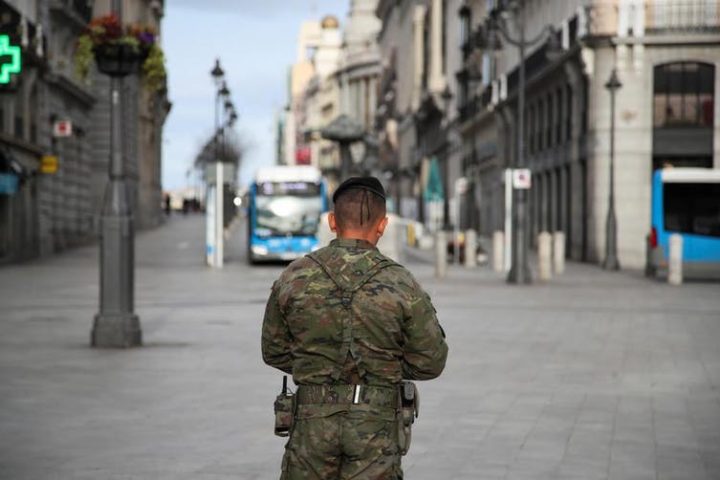Living, communicating, as well as teaching and learning in international, intercultural contexts for some of us seems pretty normal, comes naturally, while some other people keep facing obstacles, and struggle while living the international episode of theirs. How we react to what is coming from different parts of the world is, without doubt, the result of our experiences, habits, values, beliefs, i.e., vertical, and the horizontal influences we have been exposed to. Also, our openness, motivation, and readiness to learn and grow, becomes equally important.
The tightly integrated world we live in has brought many things to light and made them all available. Having everything at our fingertips could, at times, be very delusive – we might think that we know everything about cultures, countries, traditions we didn’t even know that existed a couple of decades ago. Moreover, even if it happens that we really don’t know it, we can reach it in a matter of seconds. The omnipresent availability of data of various kinds can be, by no means, dangerous, but the question is, how selective are we and what are the filters we apply, if any?
The tightly integrated world we live in has brought many things to light and made them all available.
Misinterpretation, miscommunication, and, eventually, failure in interaction is what we all want to avoid and we usually take many precautions to prevent it; however, fake news, lack of information, lack of awareness, or merely – our attitudes, character, or beliefs could lead to unwanted interactions. This can happen everywhere, at any time, but intercultural contexts are definitely more sensitive and susceptible to potential problems than any other. And, on many occasions – we do our best, we apply all the tips and tricks we got from the Internet, friends, neighbours – but we still fail – usually because we just focused on the tip of the iceberg.
Different walks of life are naturally characterised by different needs. However, it seems that education is the most delicate one. As a learner, you are exposed to too many influences, and as a teacher, you’re no less vulnerable – potentially carrying the responsibility for your students’ decisions, motivation, aspirations, and many more.
While we may have regarded international education as trendy, exclusive, even elitist, in the past, it has been a while now since we all considered it no longer a novelty but a mere need and a must in this highly interconnected world. Globalization definitely makes it easier than ever for families to move abroad for work and study opportunities, which brings the appeal of pursuing international education to the forefront.
It might, at times, seem that the jury is still out on how we interpret international in the given phrase. Some see it as moving abroad, travelling, meeting new places and people, some other understand it as a form of education broadening perspectives, strengthening innovations, building connections – no matter where you are. Given the fact that hardly can one find a place on earth which has not experienced any foreign influences, be them visible via tradition, customs, music, language, or some other traits and behaviour we’re not even aware of , getting internationally educated is achievable in all the corners of the world.
Previous decades have, undoubtedly, witnessed an upsurge in international education, with the landscape constantly growing. In this regard, the ISC Research confirms this growth in international schools’ market illustrating the situation over the last ten years – back in 2013 there were 8,944 schools, 4.4 m students, and 406,000 staff members, while in July 2023, the numbers have almost doubled – there are 13,614 schools, 6.7 m students, and 649,960 staff members.
Adding up the sensitive nature of intercultural encounters to the delicate nature of education results in an unprecedentedly fragile scenario. Expectations form international, intercultural education, are, to a certain extent, well-known. Parents usually turn to international, private education, to seek better futures for their children. Furthering knowledge about different cultures, customs, places, languages, with the goal of becoming more open-minded, understanding, versatile and, in a nutshell, ready for all the challenges life can bring to you, is, inter alia, what we expect as the outcome of international education.
Getting educated in contexts which are melting pots of individuals can partially achieve the mentioned goal. Additionally, spending some time abroad, travelling, and immersing yourself into some new realities, can also contribute to these aspirations. But the question is – what are the academic prerequisites for anyone to become an internationally aware (and educated) individual? Is it enough to have a place gathering students from various parts of the worlds, offering top notch classes taught in English? And, maybe most importantly, what sets of skills are needed by those teaching in such environment?
We definitely need more to instil an ‘international mindset’ into students. We need an adequate atmosphere that help them develop appropriate attitudes and viewpoints. It is not simply a question of memorising, replicating or mentally processing something new. It is about behaviour and about attitudes which are not frequently directly taught. It is about showcasing how to interpret ‘the other’ by adopting an attitude of acceptance and tolerance. This is the reason why we should constantly be aware of all the culture-related nuances surrounding us; apart from providing international students with cutting-edge education, comprising up-to-date methods, approaches, teaching materials and equipment, we need aspiring teachers who, apart from the required training, academic qualifications, also have a unique cross-cultural skillset, accompanied by a global outlook to work in international contexts.
It is about showcasing how to interpret ‘the other’ by adopting an attitude of acceptance and tolerance. This is the reason why we should constantly be aware of all the culture-related nuances surrounding us; apart from providing international students with cutting-edge education
Dealing with conflicts, negotiating, understanding high and low context cultures, the sensitive nature of facing different cultures, politeness norms, etiquette in general, to mention but a few, should, doubtlessly, be among top priorities in the skillsets of international teachers. Combined with their existing wealth of knowledge, expertise, and skills – they will not only help them understand all the students they work with, but also help students understand themselves and their peers better, while becoming both top-ranked professionals and culturally skilled future leaders.




